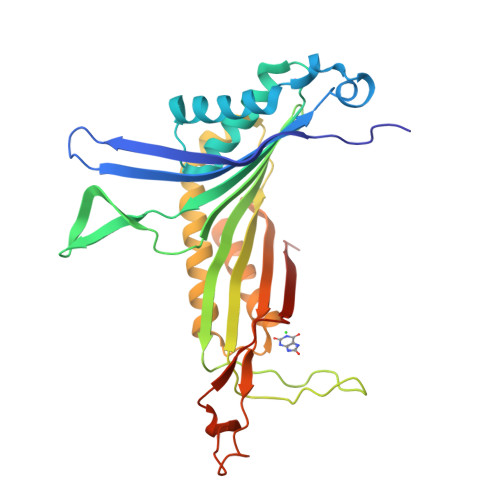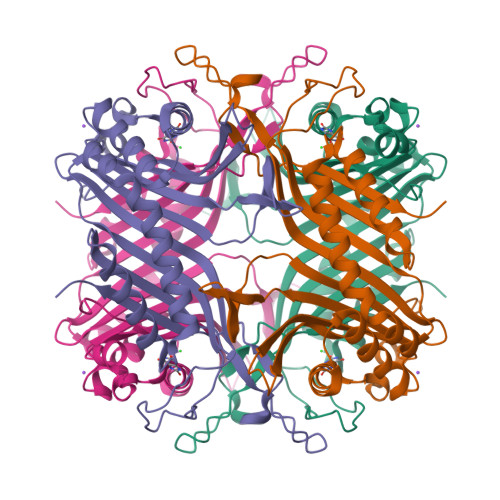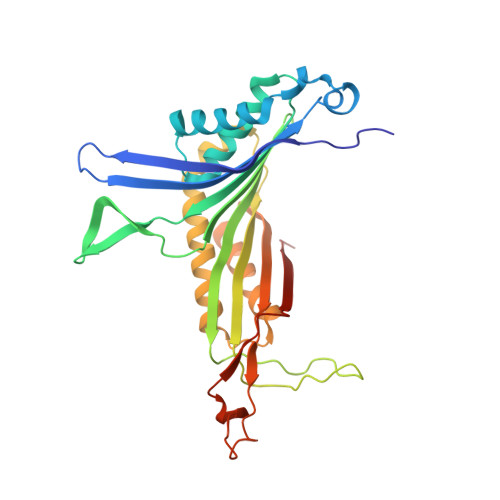The neutron structure of urate oxidase resolves a long-standing mechanistic conundrum and reveals unexpected changes in protonation.
Oksanen, E., Blakeley, M.P., El-Hajji, M., Ryde, U., Budayova-Spano, M.(2014) PLoS One 9: e86651-e86651
- PubMed: 24466188
- DOI: https://doi.org/10.1371/journal.pone.0086651
- Primary Citation of Related Structures:
4N3M, 4N9M, 4N9S, 4N9V - PubMed Abstract:
Urate oxidase transforms uric acid to 5-hydroxyisourate without the help of cofactors, but the catalytic mechanism has remained enigmatic, as the protonation state of the substrate could not be reliably deduced. We have determined the neutron structure of urate oxidase, providing unique information on the proton positions. A neutron crystal structure inhibited by a chloride anion at 2.3 Å resolution shows that the substrate is in fact 8-hydroxyxanthine, the enol tautomer of urate. We have also determined the neutron structure of the complex with the inhibitor 8-azaxanthine at 1.9 Å resolution, showing the protonation states of the K10-T57-H256 catalytic triad. Together with X-ray data and quantum chemical calculations, these structures allow us to identify the site of the initial substrate protonation and elucidate why the enzyme is inhibited by a chloride anion.
Organizational Affiliation:
Institut de Biologie Structurale (IBS), Direction des Sciences du Vivant, Commissariat à l'Energie Atomique et aux Energies Alternatives, Grenoble, France, IBS, Centre National de la Recherche Scientifique, Grenoble, France, IBS, Université Grenoble Alpes, Grenoble, France.





















